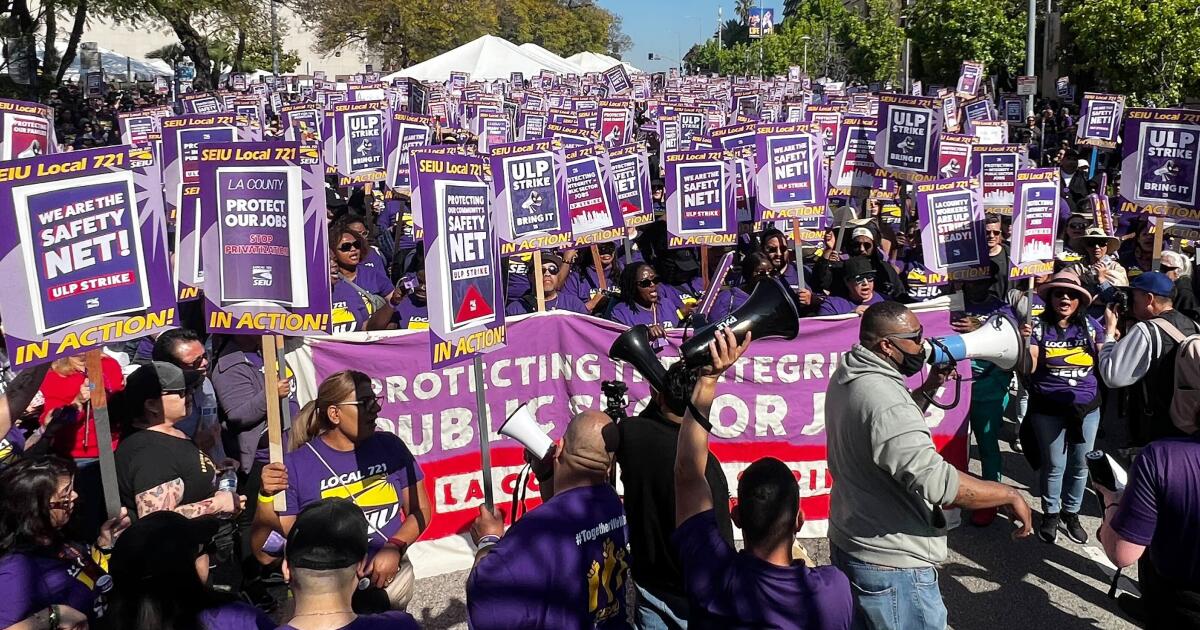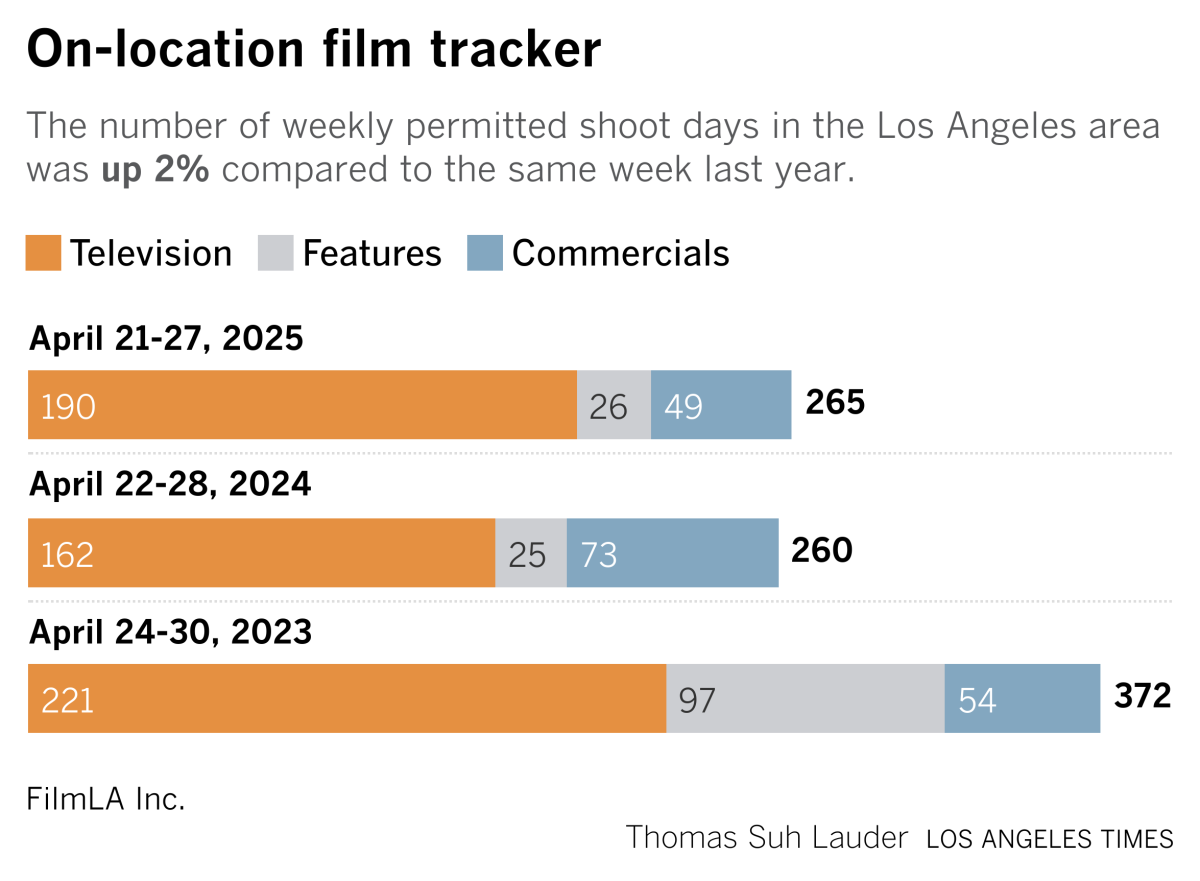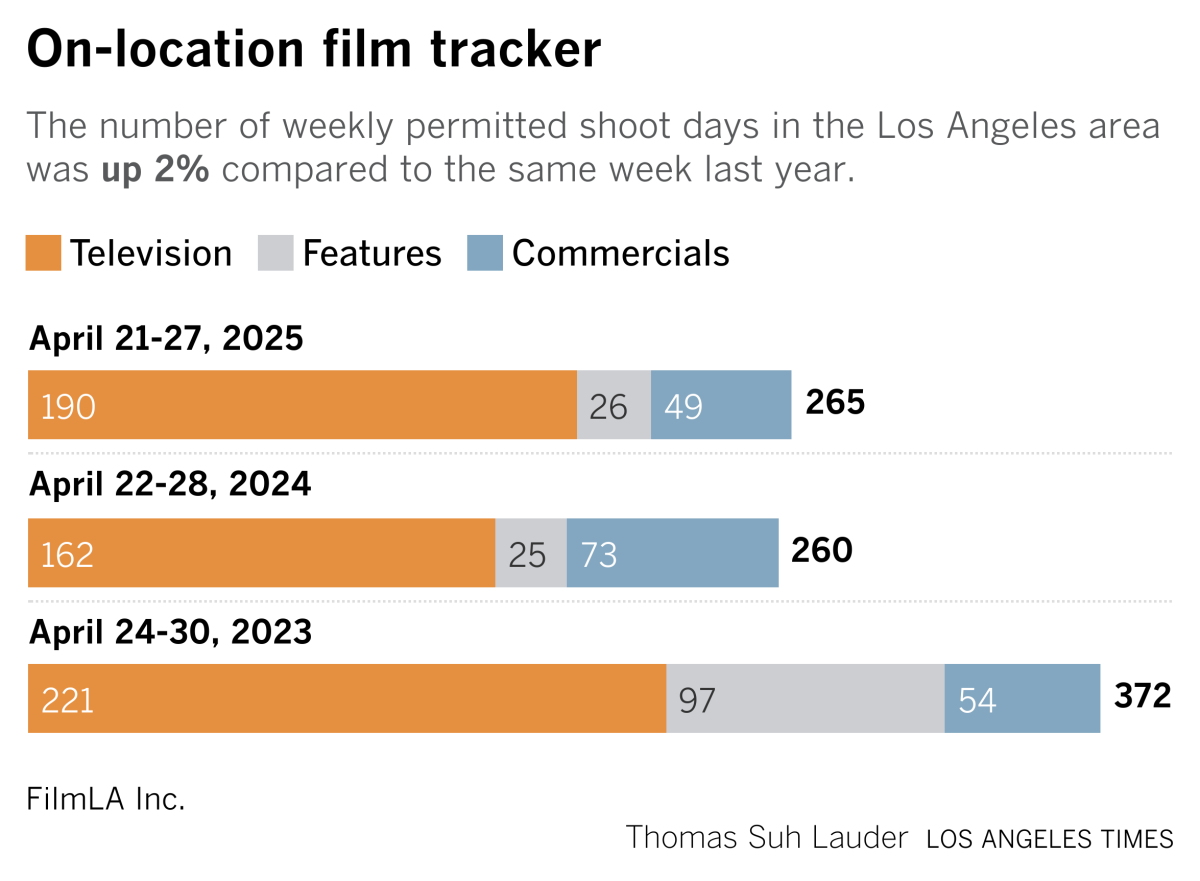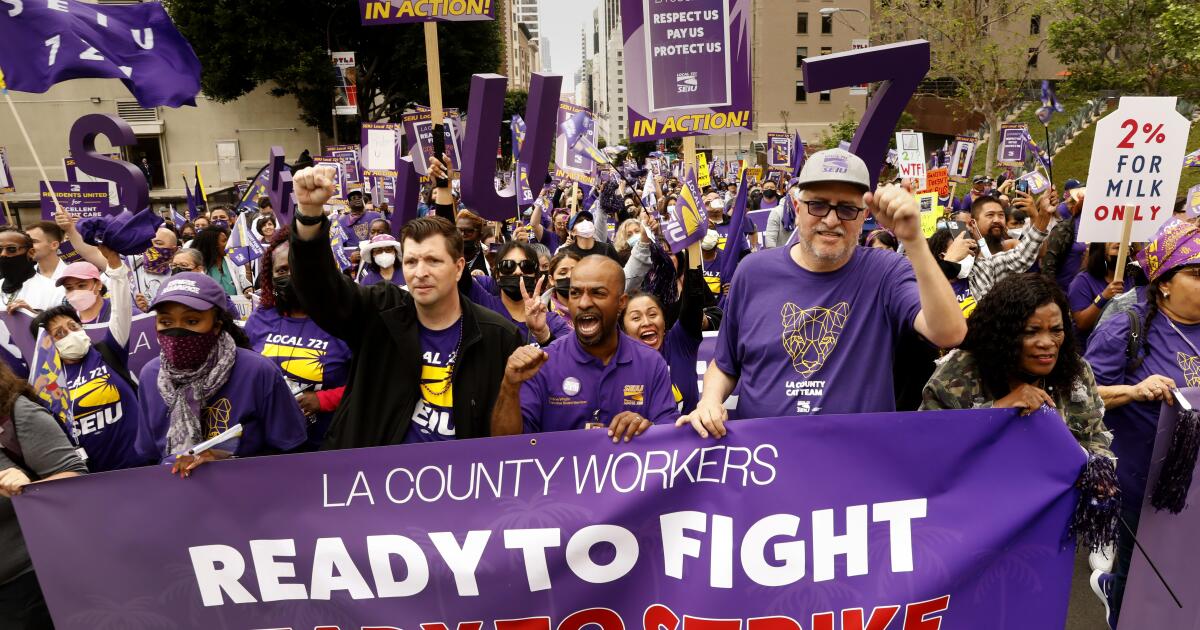L.A. County experiences major disruptions on first day of strike
Tens of thousands of Los Angeles County workers walked off their jobs and onto picket lines Tuesday, amid what their union described as a failure by the county to fairly bargain for a new contract.
SEIU Local 721, which represents roughly 55,000 workers, began a two-day strike Monday evening with social workers, nurses, clerical workers and other public employees walking off the job. The union said this is the first time in county history that all its members have joined a strike.
As a result, libraries, nonurgent health clinics and parks are closed. Public service counters throughout the county will be moving more slowly. Wildfire debris clearance may be paused.
A sea of workers in SEIU Local 721’s signature royal purple T-shirts descended on the county Hall of Administration in downtown L.A. on Tuesday for a rally marking the first full day of the strike.
Mike Long, a spokesperson for the union, said 14 members were arrested for refusing to disperse at a march after the rally, a tactic, he said, meant to underscore the severity of the situation.
The impetus for the strike, union leaders said, was 44 labor law violations allegedly committed by the county, including retaliation and contracting of jobs that are supposed to be filled by union workers. Union members said they were also insulted by the pay offered by county officials, who have said they can’t afford significant increases due to a dizzying number of financial woes.
“Does anyone remember what they tried to give us in the fall? Zeroes,” said union head David Green as workers dinged purple cowbells at the downtown rally. “Do we deserve zeros?”
L.A. County Chief Executive Fesia Davenport said county officials have “moved off” a zero raise offer in recent weeks but remained cautious about what they could offer.
“We don’t want to negotiate ourselves into a structural deficit,” Davenport said in an interview Monday. “We want to hold the line.”
Otherwise, she said, the county might have to cut positions down the road, similar to what Los Angeles Mayor Karen Bass has proposed. Last week, Bass released a budget proposal that included 1,650 layoffs to help close a nearly $1-billion deficit fueled in part by employee raises the city agreed to last year.
The county said it is now offering SEIU Local 721 members a $5,000 bonus in the first year of the contract, as well as a cost-of-living adjustment and an additional bonus.
“The County is offering what we believe is a fair three-year compensation package, considering the tremendous budgetary pressures we face,” Davenport’s office said in a statement.
Steve Koffroth, SEIU’s chief contract negotiator, said the county waited until the last moment to respond to the union’s first proposal for a new contract. The previous contract expired at the end of March.
“We got it to them before Christmas, and they sat on it for months,” Koffroth told the booing crowd.
When county officials made a counteroffer, he said, “they came with a pittance.”
The county had initially said it couldn’t afford raises this year because of wildfire costs, a massive sex abuse settlement and the loss of federal grants. Davenport said the union’s initial salary proposals could have cost the county billions of dollars.
Union members allege the county has spent too much money on outside contract workers rather than filling thousands of vacancies. Many speakers at the rally pointed to a union-led study last December that found the county spent billions on private firms, in what amounted to a “taxpayer-to-private-sector-pipeline.”
The county dismissed the report as a “misleading and erroneous” negotiation tactic.
Union members said the reliance on contractors has been particularly apparent in healthcare, where they said that vacancies are temporarily filled by highly paid contract workers.
“How would you feel if someone comes into your hospital for three weeks and makes four times your salary and leaves you,” said Theresa Velasco, a member of the union’s executive board, who works as a community health worker at Rancho Los Amigos, the county rehabilitation hospital.



